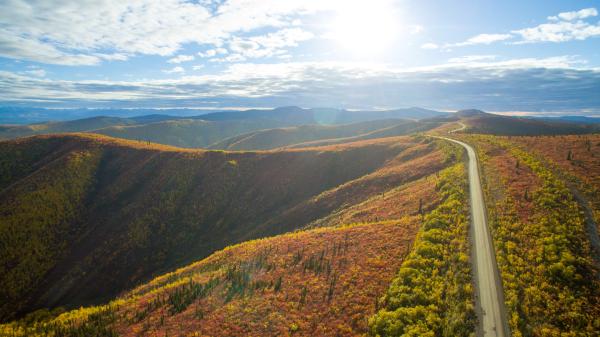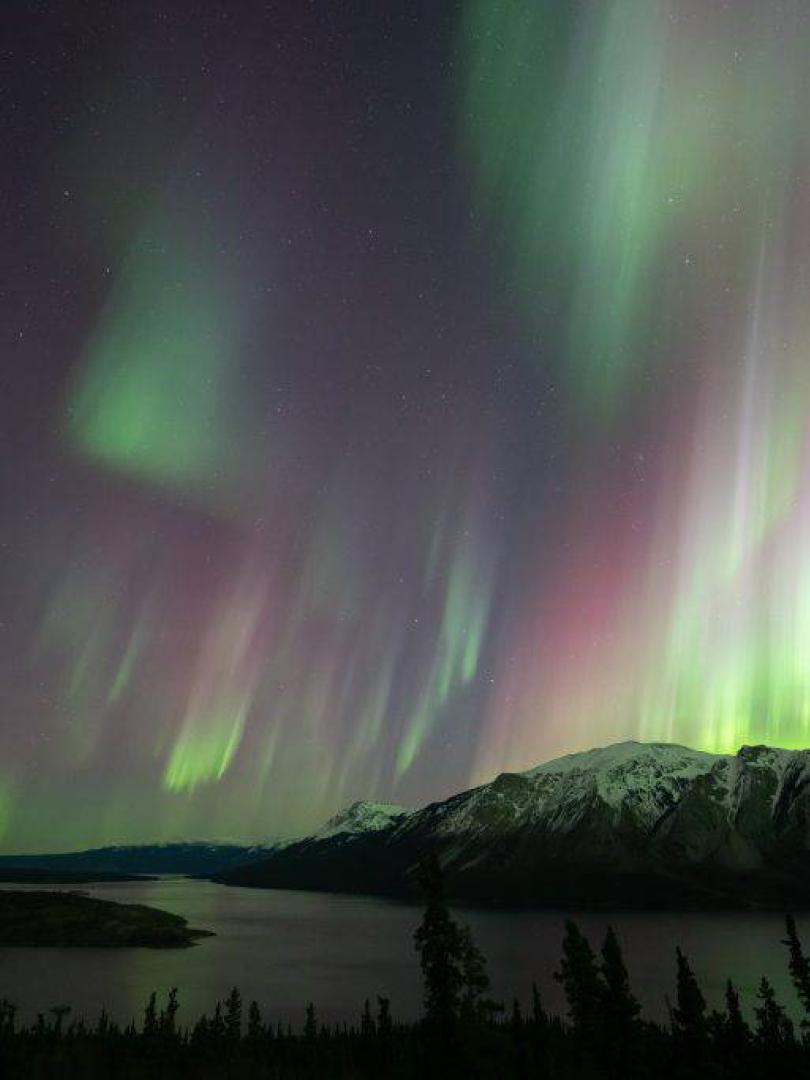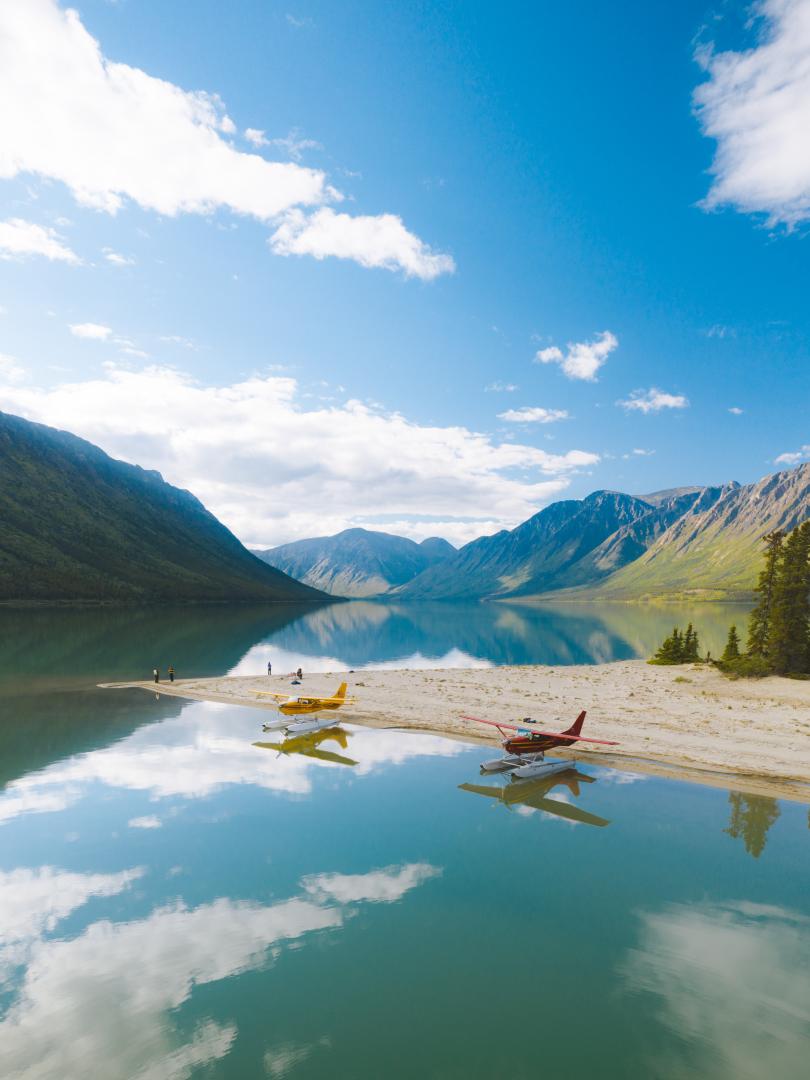
Seasons

1

Southern Yukon experiences a sub-arctic climate, bringing dry and cold winters, while the northern regions endure an arctic climate with even colder temperatures. Snow typically blankets the territory from late-October (earlier in the north) through mid-April. With shorter daylight hours in winter, there's more opportunity to witness the northern lights, making this season a fascinating time to visit.
The top winter attraction is northern lights viewing, but daylight offers plenty of adventure too—dog sledding, snowmobiling, snowshoeing, ice fishing, and more. The Yukon fully embraces winter with a variety of festivals and events, including extreme challenges like the Yukon Arctic Ultra and the Yukon Quest, a 1,000-mile international dog sled race. Spring in April and early May brings a burst of life as crocuses bloom and migratory birds return with the melting snow.
Winter & spring activity ideas
2

Yukon summers are typically warm and dry, with long hours of daylight known as the midnight sun. The farther north you go, the longer the daylight—north of the Arctic Circle, the sun doesn’t set at all on the summer solstice (June 21). Evenings, however, can still be cool. The summer season is relatively short, lasting from mid-May to early September.
In the northern parts of the Yukon, summer is even shorter, but the extended daylight hours keep things lively with bird migrations, wildlife raising their young, and wildflowers blooming in abundance. The long, warm days are perfect for outdoor adventures, and yes, you really can read a book by the light of the sun at midnight!
Fall arrives quickly, where the fall colours peak in late August in the north and mid-September around Whitehorse. It’s a breathtaking time of year, with cool days, crisp nights, and landscapes transforming into vibrant yellows, pinks, and reds. As the skies darken again, the northern lights make their return, lighting up the fall nights.


